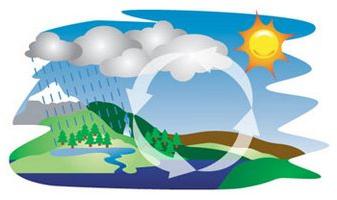Living matter
The living matter of the biosphere includes both organic (chemical) and inorganic (mineral) components.
More than 90%, formed mainlyoxygen, carbon, hydrogen and nitrogen, make up terrestrial vegetation. According to experts, living matter is one of the most "powerful" terrestrial geochemical forces. It develops at the intersection of the hydrosphere, the lithosphere, and the atmosphere. Under adverse conditions, life processes stop or slow down to the point where there are no visible manifestations of life. Thus, the state of suspended animation develops.
Living matter has its own specific features.
First of all, it is characterized by a hugeamount of free energy. In the conditions of the inorganic world, the living substance (in terms of energy) can be equated with short-lived lava flows that have not yet frozen.
One of the main features is the rate of chemical reactions. They in living matter, in contrast to inanimate, flow thousands of times faster.
A distinctive feature is the composition. Living matter includes independent compounds (enzymes, proteins and others). These chemical compounds show resistance only under favorable conditions. To a large extent this feature is also characteristic of mineral components.
The living substance commits arbitrary movement. AT. I. Vernadsky, believing that this movement is largely self-regulating, distinguished two of its special forms. Passive is formed through reproduction and is inherent in plants and animals. Directional movement of organisms (characteristic for animals, rather than for plants) creates an active form of movement. A living substance is also distinguished by the desire to fill the whole space with itself.
A characteristic feature is also the great chemical and morphological diversity. Living matter, in contrast to inanimate, can not be just a liquid or gaseous medium.
In nature, there are dispersed bodies -individual organisms. They make up living matter. Moreover, it is not on the planet in one morphologically pure form - in the form of populations of organisms that represent one species - it always represents biocenoses.
Continuity of alternation of generations providesthe genetic connection of modern living matter with what existed in past eras. The characteristic feature is the evolutionary process. In other words, reproduction is not based on the principle of absolute copying of past generations, but through biochemical and morphological changes.
There are five main functions of living matter.
- The energy function is the absorption of the energy of the Sun during photosynthesis, while the decomposition of saturated substances - the absorption of chemical energy.
- During the life of certain speciesthere is selective accumulation. This function is called concentration. It can be carried out by a mass increase in the concentration of components in the medium or by the specific accumulation of one or the other element, regardless of the medium.
- The destructive function consists in the mineralization of abiogenic organic substances, in the decomposition of inanimate inorganic products, in the formation of components in the biological cycle.
- The mediating function is a transformation of the physical and chemical indices of the environment.
- Due to food interactions, a significant mass of elements moves in the horizontal direction and against the force of gravity. Thus, the transport function is performed. </ ol </ p>





